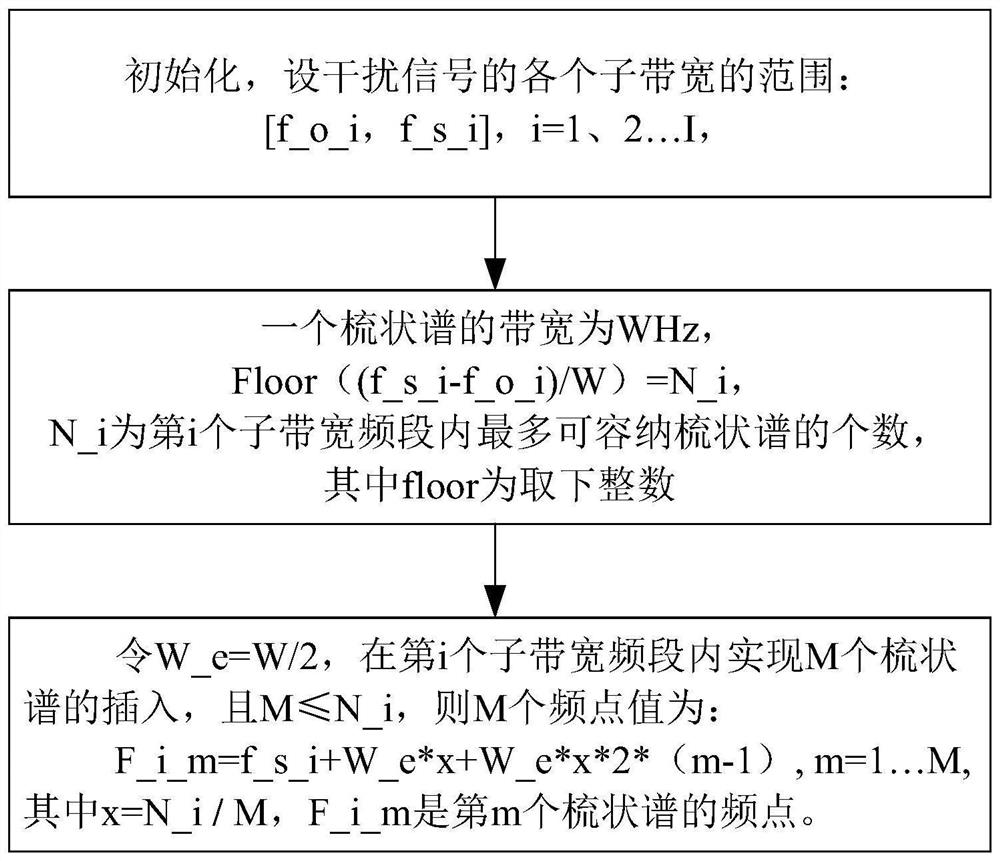A Method for Determining Frequency Points of Comb Spectrum Interfering Signals in Multiple Limited Bandwidths
A technology of interference signal and limited bandwidth, which is applied in the direction of transmission monitoring, communication channel monitoring, electrical components, etc., can solve the problems of affecting accuracy, lack, conflict of working bandwidth range, etc., and achieve the effect of avoiding conflicts
- Summary
- Abstract
- Description
- Claims
- Application Information
AI Technical Summary
Problems solved by technology
Method used
Image
Examples
Embodiment Construction
[0013] The present invention is further described below in conjunction with the accompanying drawings and embodiments.
[0014] The present invention provides a plurality of limited bandwidth range comb spectrum interference signal frequency point determination method. The core idea is to obtain the insertion frequency point of each comb spectrum based on the ratio of the maximum number of combs that can be inserted and the number of combs that actually need to be inserted, to generate comb spectrum with different frequency intervals based on different finite bands, to generate comb spectrums with different frequency intervals based on the maximum number of combs that can be inserted with a limited bandwidth, and to obtain the insertion frequency point of each comb spectrum based on the ratio of the maximum number of combs that can be inserted and the number of combs that actually need to be inserted, so as to produce accurate interference with different operating frequencies in d...
PUM
 Login to View More
Login to View More Abstract
Description
Claims
Application Information
 Login to View More
Login to View More - R&D
- Intellectual Property
- Life Sciences
- Materials
- Tech Scout
- Unparalleled Data Quality
- Higher Quality Content
- 60% Fewer Hallucinations
Browse by: Latest US Patents, China's latest patents, Technical Efficacy Thesaurus, Application Domain, Technology Topic, Popular Technical Reports.
© 2025 PatSnap. All rights reserved.Legal|Privacy policy|Modern Slavery Act Transparency Statement|Sitemap|About US| Contact US: help@patsnap.com

